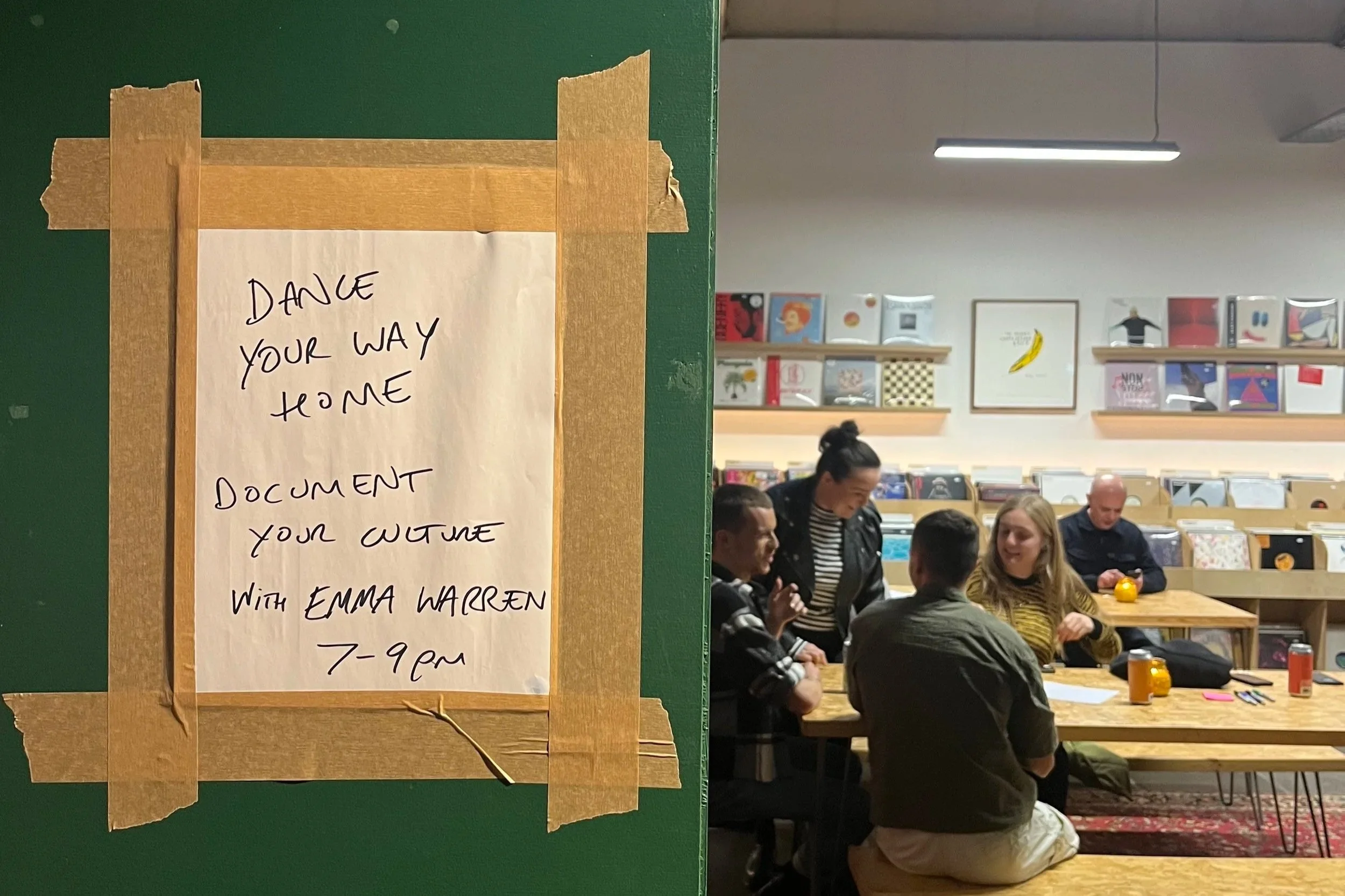Music in Youth Clubs: Roots of Creativity
This weekend, while painting the hallway, I found myself tuned into BBC 6 Music when an interview between Zakia Sewell and writer Emma Warren stopped me in my tracks. Emma was speaking about the influence of UK youth clubs on music, culture, and creativity—the focus of her new book Up the Youth Club. Her reflections immediately resonated with me, not only because of my own history with youth work, but because I’d crossed paths with her in a chance encounter the previous year.
In 2024, I was in Belfast facilitating a collaborative arts project at the W5 Science Centre. With a free Friday evening before my flight home the next morning, I turned to Eventbrite to see what the city had to offer and discovered a talk about the cultural importance of the dance floor. The event was free, the theme caught my interest, and before long I was making my way across East Belfast to the Sound Advice record store.
Emma’s talk was both inspiring and strangely familiar—her relaxed, generous delivery style and deep knowledge of music culture made for a compelling evening. I met local people who spoke about attending parties in the 1990s during the Troubles, and their stories added a powerful new dimension to the idea of collective spaces. Hearing how dance floors became pockets of freedom and connection amidst conflict underscored just how vital these shared spaces are, and how profoundly they shape those who pass through them.
During the 6 Music interview, Emma mentioned the Basement project—an influential hub for young jungle DJs and producers like Krust and Roni Size. It was based in Sefton Park Youth Club on Ashley Down Road, a space deeply woven into my own family history. My grandparents lived directly opposite the club, and my mum both attended it and later volunteered there as a young adult, and to me was always an inviting place I felt free to explore.
My own connection became even more personal in 1997, after I was arrested for painting graffiti. While I was awaiting the charge, Graham Baker, the youth worker at Sefton Park, gave me a few spray cans and encouraged me to paint a piece for the club . He invited me to paint a hoarding on the side of their building facing Ashley Down Road, and later wrote a reference to the police in full support of my work. It was one of those small but pivotal acts of belief that comes directly from the heart of youth work and can change the direction of a young person’s life.
Sketch for Sefton piece (1997). note: ‘Don’t close the basement studio’ above.
That ethos—meeting young people where they are, rather than directing them from above—stayed with me. I went on to qualify as a youth worker and have worked with young people since 2000 in many roles and settings. Whatever the context, the “youth club mindset” has always guided my approach: create space, empower ownership, foster belonging.
Today, I continue to facilitate creative arts projects with young people across Bristol and the South West, and I’m as passionate as ever about the importance of spaces that young people can truly claim as their own. These environments don’t just nurture creativity; they nurture identity, confidence, and community.
So I’m very much looking forward to reading Emma’s latest book, Up the Youth Club, and comparing notes—both as someone shaped by youth club culture and as someone still working to build those kinds of spaces for the next generation.
Zakia Sewell and Emma Warren - Photo credit: @zzzakia Instagram





